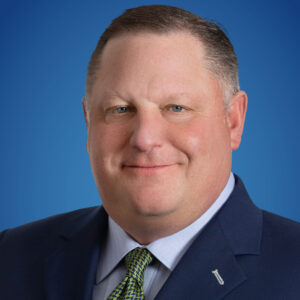Carriers and MGUs have embarked on missions to transform experiences of overwhelmed commercial insurance underwriters and their frustrated distribution partners with decision-making power boosts from automation and AI tools.
And even though executives of three transformers say the roads to success—measured in terms of ease, speed, growth and profit—are never ending, supercharged underwriters already are making real progress at QBE NA, Nationwide and Coterie, they told Carrier Management recently.
The leaders, as well as executives of the technology providers with whom they’ve partnered, together presented sepia-colored pictures of underwriters eyeing multiple computer screens to validate submission data, to comply with company guidelines and to access portfolio management information. (See related article: How Commercial Underwriting Transformation Happens: Meet the Technology Players)
That’s yesterday’s movie.
Fast forward to the dynamic images of transformed underwriter battalions of today and tomorrow, moving closer to binding small accounts in real time armed with just a prospect name and address. They also continue to wield their human powers to grow books of middle-market and larger account business, devoting time to relationship building, risk selection and pricing tasks—the activities they were built to perform.
These are their stories.
QBE NA’s Business-Led Transformation: Driving Efficiency—And Uniformity
Tom Fitzgerald, president of Commercial Insurance at QBE North America, summed up his company’s continual transformation efforts during an early November interview. “QBE has been on a journey to simplify the day in the life of an underwriter and bring tools that can allow them to access broad swaths of information efficiently and effectively in the process of underwriting a particular insured.”
 “Depending upon the underwriter, depending upon the level of experience, depending upon their understanding of how QBE does it, what we found is a lack of uniformity…The process by which they got to the outcome and the things that they evaluated throughout the process—third-party data, internal data other elements that helped them make risk decisions—were not consistent across the platform.”
“Depending upon the underwriter, depending upon the level of experience, depending upon their understanding of how QBE does it, what we found is a lack of uniformity…The process by which they got to the outcome and the things that they evaluated throughout the process—third-party data, internal data other elements that helped them make risk decisions—were not consistent across the platform.”
Tom Fitzgerald, QBE North America
“As we think about what the next five years holds for us, we look out and we see great opportunities to continue to simplify how data is provided, how underwriters can consume it, and then how it can ultimately help inform decision-making at the desk level. [But] this is not a start and a stop. [It’s] a journey that continues with markers along the way,” he said.
“A lot of our transformation has been business led,” he added. “It’s not a bunch of technology folks making decisions in a vacuum.”
(Editor’s Note: Carrier Management interviewed Fitzgerald in November 2022. In January 2023. Fitzgerald left QBE NA to join World Insurance Associates, LLC in a new role as president of World’s retail business.)
“It was really about understanding the current state where underwriters were living today,” said Greg Puleo, vice president, Digital Transformation, providing more details of the business-led process. “What data elements do they [underwriters] need to make decisions? What else do they pull together as part of that process? How do they interact with their broker partners?”
Based on the answers, “we built out an exhaustive list of capabilities that our future state solutions needed to fulfill…We pulled together some wireframes and visionary documents around how we could bring those together, centered around the concept of an underwriting workbench—[to give] underwriters access to all of those things in one place, whether it was third-party data, data we had in our internal systems, tools or AI models. [And we wanted them to] see it in an intuitive fashion…, right there at the time of decisioning, so they could spend their time focused on customer conversations, evaluating risks, making good decisions vs. finding the right Excel sheet or going to the right website.”
Describing the current state as “highly manual,” Puleo reported that when everything was counted up, “there were probably 13 or 14 different things an underwriter would have to interact with” to make a decision. Giving specifics, he said, “Our underwriting process starts with an email. [Underwriters] get an email from an agent or a broker…It’ll have some cover language and then a handful of attachments—maybe a schedule of vehicles, a listing of properties, a list of employees…They would take that schedule of vehicles and key it into an Excel sheet on our side, and then do some pricing modeling there. They’d key that into a policy admin system. We were running a fairly older mainframe-based system, so they’d have to key it into that and get some details out of there. They’d pull two or three different data sources, whether that’s a PDF report from CoreLogic or whether that’s a download from ISO.”
“Then they would run it through some additional tools on our side, and they’d take all of that and ultimately make a risk decision [to deliver a] quote.”
“They send that out as a manual document the broker would get. They’d go back and forth in some negotiations. Ultimately, you get to a bind decision.”
Fitzgerald said jockeying between tools and data sources isn’t the only problem. “Depending upon the underwriter, depending upon the level of experience, depending upon their understanding of how QBE does it, what we found is a lack of uniformity…The process by which they got to the outcome and the things that they evaluated throughout the process—third-party data, internal data, other elements that helped them make risk decisions—were not consistent across the platform.”
“Uniformity matters. What is the best practice that we can have at the underwriting desk?” That needs to be replicated throughout the underwriting organization, he said.
Puleo went on to describe changes to a future state that were in progress at the time of the Carrier Management interview. “Where we’ll be very, very quickly landing is a modern underwriting workbench,” he said, referring to a proof of concept that QBE NA has done with InsurTech Federato. Federato has created an AI-based platform known as RiskOps, providing underwriters with a unified view of all the disparate information they need to select and price risks—everything from data prefills to underwriting guidelines to catastrophe model information. (See related online article, “How Federato Is Solving Underwriters’ Problems—and Lowering Carrier Reinsurance Costs“)
“In today’s world, documents will come in, they will be automatically ingested; Excel sheets or PDF documents will automatically be converted into a format that can be machine readable and pushed into the data store,” Puleo said. The underwriter “then sees all of their accounts and all of that first-party and third-party data in one spot, either enabled through API connections to third-party data sources like D&B or ISO or CoreLogic, or through internal connections to our data store that has all the policy-level information and all the claim-level information.”
“So, within this single pane of glass, underwriters now have all the detail they need. [And we] can start to enforce some of that uniformity. They see the same third-party data elements. They see the same internal data. They have to go through a referral process based on account size or premium volume. They have to go through certain checks based on enforced workflow. All of that is now enabled because it’s within the single system.”
Puleo confirmed that QBE NA has also done a number of integrations with third-party data vendors. “The real power of the system is the ability to quickly integrate with new ones,” he said, noting that vendors specialize in different types of data, like property information, crime-level information and cyber risk scores. “Those are things we can quickly snap right into this platform through an API integration.”
“I’ll tell you as a former broker and a current underwriter, data is king,” Fitzgerald said. But it “can also be a quagmire in terms of the underwriting process,” he said. “The question is how do you synthesize the data to put forth to an underwriter not thousands and thousands of pages but a view toward an answer like, ‘Hey, look out for this,’ or ‘Hey, look, have you thought of that?’ he said, referring to benefits of the new platform.
Puleo agreed. “For me, the measure of success is probably when the platform fades into the background and the underwriters can focus on making good risk decisions and interacting with their agents or brokers,” he concluded.

“For me, the measure of success is probably when the platform fades into the background and the underwriters can focus on making good risk decisions and interacting with their agents or brokers.”
Greg Puleo, QBE NA
Fitzgerald offered three metrics for gauging the success of a commercial underwriting transformation. “One is underwriter ease of doing business. How do you simplify how they can actually underwrite? Two, as you simplify, you get the opportunity to ingest more. So, our productivity measures by underwriter should go up. Three is that if it helps us make a better risk decision, even on one account, given the fact that we’re putting out tens of millions of dollars worth of limit, one account with a better risk decision-making framework can pay for tools in IT transformation for decades…”
“Then, finally, it does come down to how do we actually aggregate data; how do we actually look at pools of accounts or pools of industries or pools of product, and then ultimately react as we build a profitable insurance company across many lines of insurance. Data is going to be the answer to that,” he said.
For Nationwide Agents, Maybe Doesn’t Cut It
While QBE NA’s leader of commercial insurance—a broker for most of his career—talks about making the placement of middle-market commercial business easy for the company’s underwriters, Tony Fenton, a lifelong underwriter and underwriting executive, frames his company’s transformation goals around the speed and ease of small business transactions for agents and customers.
 “A big component to being successful is you can’t just have the tools. You have to make sure your teams are adopting and moving with the tools and the investments you’re making.”
“A big component to being successful is you can’t just have the tools. You have to make sure your teams are adopting and moving with the tools and the investments you’re making.”
Tony Fenton, Nationwide
“It’s really about getting a fast yes or a fast no for a customer or agency partner… No distribution partner wants a ‘maybe’ on a thousand-dollar account. They want to know if you can write it, at what price, and move forward,” said Fenton, Nationwide’s vice president of Commercial Lines Underwriting & Product.
“From my perspective, it’s about being relevant to your distribution partners as well as customers, because if you’re not able to create that speed, ease and efficiency in terms of decisioning, you ultimately won’t be a selected partner to do business with, Fenton said, recalling the original goals of a multiyear transformation.
“Much of this is made possible through modernizing the core systems to ingest data, to modernize your products, as well as modernize the way you underwrite…Whether it’s on the policy center side of the equation or the claims piece of the equation, being able to modernize the core systems to ingest data is foundational for a carrier,” Fenton instructed. Fenton also discussed Nationwide’s partnership with data providers, including NeuralMetrics, which returns business profiles for some 50,000 businesses to carrier partners, using just business name, address, and web address or email, in a matter of seconds. (See related online articles, “Small Biz Commercial Underwriting Needs Real-Time Data—and Transparency: NeuralMetrics CEO“)
Still, data providers are transparent about the fact that they don’t have all the answers. And Fenton says that transformation hasn’t meant that small business accounts can always be bound with just two inputs from an agent. “I don’t know if we’re to name, address, but we’ve really accelerated the underwriting process to get to the answer faster. When at all possible, if we can use a name and address to prefill the information to get to a decision quickly, that’s exactly what we’re doing.”
“Said another way, we do have straight-through processing, straight-through decisioning, but it’s predicated on the risk, the data and the ability to make that call, which I think each and every year the industry gets stronger [doing], as does Nationwide.”
Commercial underwriting is changing for both small and middle-market risks. “The art of a middle-market underwriter is the ability to see all that data in one spot and make a fast, good, educated decision. There’s always going to be the art because really the value proposition in middle market is the expertise,” Fenton said.
Like QBE NA’s Puleo, Fenton agrees that carriers need to partner with more than one data provider. Also important is “having the right dedicated team to evaluate the data and do quality assurance on it,” he said. “You don’t just enter into a relationship with a data firm. What you do is you continue to validate it and prove it and make it even stronger into the future.”
For the underwriters, automating workflows means more than minimizing the challenges of data entry and trying to piece together disparate bits of information for a more efficient and accurate process toward an educated decision. “The skills of an underwriter 20 years ago vs. the skills of an underwriter today are uniquely different,” Fenton said, noting that today’s underwriter needs to be data fluent and digitally literate and to have portfolio skills vs. one-over-one risk underwriting skills. For the carrier, “a big component to being successful is you can’t just have the tools. You have to make sure your teams are adopting and moving with the tools and the investments you’re making” in those, he said, referring to Nationwide’s five-year, $160 million ‘Future of Work‘ investment announced in January 2020.
Asked how Nationwide measures the success of its commercial underwriting transformation, Fenton said that “it comes down to the ability to get selected by an agency partner. That’s critically important. If we’re not being selected, that doesn’t bode well for us. We’re not growing. We’re not driving.”
Coterie’s 100 Percent Digital Underwriting Process
Like Nationwide, much of the inspiration for Coterie’s automation of underwriting process comes from the desire to give agents and customers what they need—fast. The leader of the managing general underwriter, Chief Executive Officer and Co-Founder David McFarland, says Coterie is on a mission to bring speed, simplicity and service to small business insurance—and it’s accomplishing that with a 100 percent digital underwriting process.
 “What our underwriters are really focused on is programming their brains into rule-based engines.”
“What our underwriters are really focused on is programming their brains into rule-based engines.”
Dave McFarland, Coterie
The InsurTech does, in fact, employ underwriters, however. “What our underwriters are really focused on is programming their brains into rule-based engines,” McFarland said.
“We’re working with smaller and micro commercial businesses, [not] large specialty operations. When we look at these risks, we can take what we know from an underwriting discipline and use technology and data to programmatically decide what risks we don’t want, what risks we do want, how we should attach endorsements, how we should utilize IRPM [individual risk premium modification] schedule credits, debits, etc., in addition to our rating algorithm.”
“Over time, as we see these effects take place, we see how the book performs, we can learn even more and create more rules” to control cat exposures or avoid writing poor risks—or to find ways to turn them into good ones. “Sometimes it’s not necessarily [that] an entire risk is bad, but we’ll agree to insure the risk based on certain terms. We use our underwriters to inform how we do that since they have expertise in the space,” he concluded.
Coterie’s underwriters vet data vendors and help to retool the internal engine that powers the digital underwriting process. “It’s a mistake to think like you can just hook up to anybody and then you can have automated underwriting. It’s not really a thing. You get the data in, then you have got to make decisions on it…Then you have to operationalize that,” McFarland said, noting that Coterie built in-house technology it refers to as Sleuth, which pulls in third-party data and runs it through machine learning models.
“How much confidence do we have in this stuff? What can we impute based on these statistics? And then subsequently, how do we now use this information? Are we going to endorse this policy? Are we going to just exclude it? Are we only going to just exclude it on a property side?…How can we make this risk desirable?”
McFarland said that Sleuth has a user interface into which “our underwriters can, with their keyboards,” create rules from 3,000 incoming data elements. He shared a hypothetical example: “If this particular field is greater than X and it’s in Florida, then we want to endorse this wind-hail exclusion.”
“They can push that to production completely on their own without developer or anything like that. Our team did this so that we can automate the operational side of underwriting to where we’re not having to wait multiple weeks to get a new rule in. That’s pretty magical,” he said.
Coterie, which distributes small business insurance through agents and brokers and through partnerships with financial software providers, PEOs and other business platforms, announced an update of a dashboard for agents and brokers known as SimplyBind in July. The big news: SimplyBind now prefills information based on two data points—just business name and address—and returns a yes or no decision to agents within seconds (with average bind time coming in a just over three minutes).
“What this ultimately does is it turns the 32 million small businesses out there, which were frankly more of an obligation to agents and brokers before, [into] an opportunity. Now they’re actually something that they can write efficiently and profitably,” McFarland said.
Like the other underwriting organizations, Coterie uses more than one data vendor to fuel Sleuth and SimplyBind, including InsurTech Planck (separately profiled in the online article “Planck: Mining Data Gold for Small Commercial Insurers“). The most important consideration in selecting vendors, McFarland said, is API response time. “API response time is so crucial for us because we’re trying to create a delightful end user experience for our agents and brokers and policyholders.”
In addition to delivering on its mission to “bring speed, simplicity and service to commercial insurance”—bringing coverage to uninsured small businesses and helping agents who lost money whenever they tried to place small accounts in the past—McFarland highlighted the benefits of 100 percent digital underwriting to Coterie itself. “We’re lowering the expense ratio because we’re not touching [the business] all the time…And with our additional data, we are getting insights that others aren’t. So, we’re actually able to improve the loss ratio,” he said.





















 What to Expect in 2026: U.S. P/C Results More Like 2024
What to Expect in 2026: U.S. P/C Results More Like 2024  The Hardest Part of Innovation in Insurance Isn’t Technology; It’s Culture
The Hardest Part of Innovation in Insurance Isn’t Technology; It’s Culture  Executives on the Move at HSB, American Modern Insurance Group, AIG
Executives on the Move at HSB, American Modern Insurance Group, AIG  Examining 5 Key Factors Fueling MGA Growth—and Emerging Challenges Ahead
Examining 5 Key Factors Fueling MGA Growth—and Emerging Challenges Ahead 











